
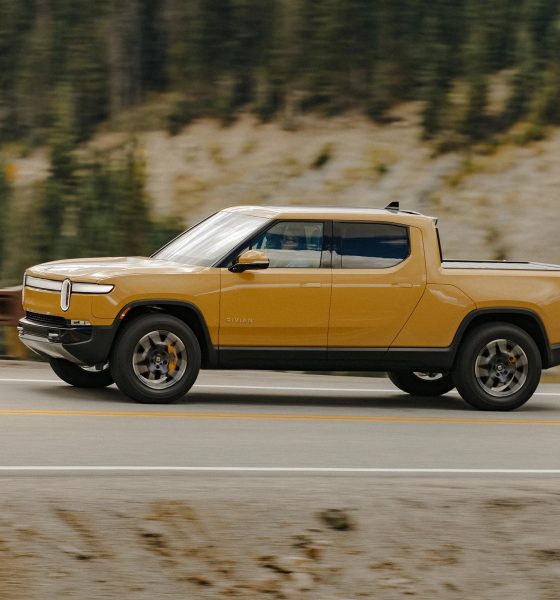
Investor's Corner
Rivian, down 45% since IPO, poised for 160% surge: Morgan Stanley
Rivian (NASDAQ: RIVN) stock is down 45 percent since its initial public offering in November when shares started publicly trading at around $106.75. Currently, Rivian shares hover around the $55 mark. Its drastic fall in the first few months of being publicly traded is not keeping Morgan Stanley’s Adam Jonas from shying away from an incredibly bullish position, stating it will surge around 160 percent from its current “overly depressed” levels.
At the time of writing, Rivian shares were trading at $55.24.
Rivian had all the advantages an up-and-coming automaker would want. It has a savvy CEO, a sizeable investment backed by Amazon, one of the largest companies globally, and a line of products that had consumers thirsty for more information. The COVID-19 pandemic pushed the company’s initial production dates back several times. After a year of delays, Rivian started delivering the R1T pickup late last year.
Rivian ends 2021 with 1,015 vehicles produced, COO retires from company
In terms of its stock performance, things have not gone according to plan. Rivian peaked at levels just shy of $180 per share, fed mostly by analyst narratives that pushed the company as “the next big thing” in the sector. However, EV production is proving increasingly difficult for many automakers. Long-standing OEMs like Volkswagen and GM have struggled in early projects, and startups like Rivian and Lucid are yielding numbers that are just fractional compared to industry leaders Tesla.
However, Tesla’s production history also showed lagging periods early on, only to iron out the bottlenecks and become the largest manufacturer of EVs, ramping to over 900,000 annual units fourteen years after producing its first model.
Jonas, who has covered the EV sector for years, says if any auto company can dig itself out of the depths, it’s Rivian.
Credit: MotorTrend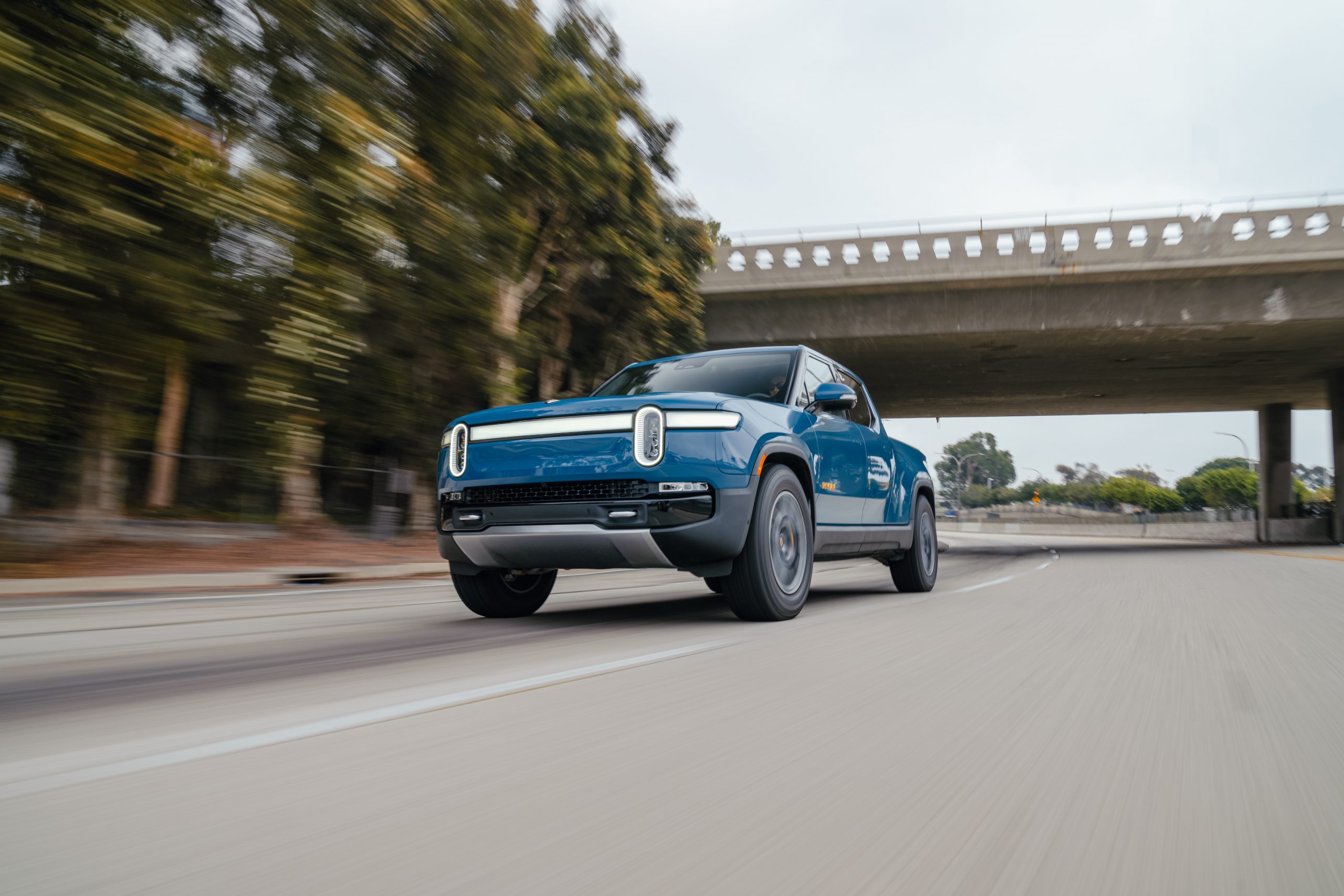
“An IPO that preceded the December market top, the reality-check of supply chain bottlenecks (normal in auto land, perhaps not normal in tech land), and the gut-check of having partner Amazon exercise its right to secure EDVs from alternative vendors (Stellantis, Daimler) has shaken investor confidence and, we think, provides an excellent opportunity to gain exposure to a company, product cycle, and business model that we believe has a greater chance [of] being a winner in this industry than most other EV competitors,” Jonas wrote in a note to investors. “While Rivian is at a far earlier stage in its industrial journey than Tesla, we do not see this company as just a ‘concept stock’ either. The road to ramping production will be choppy, but we expect largely due to supply rather than demand.”
Rivian shares spiked briefly earlier this week following reports of an increase in production output of the R1T. Rivian was unable to comment on the matter when we asked for clarification. The routine sell-off of tech stocks this week has also likely contributed to Rivian’s sharp fall. After all, Tesla’s impressive Q4 2021 Earnings Call did not yield any gains in the way of the industry leader, as the company’s stock is down nearly 8% this week.
Jonas holds a $147 price target for Rivian, with a “Buy” rating. Jonas is ranked 656th, out of 7,760 analysts. He has a success rate of 52% with an average return of 11.4%, according to TipRanks.
Disclosure: Joey Klender is not a RIVN Shareholder.
I’d love to hear from you! If you have any comments, concerns, or questions, please email me at joey@teslarati.com. You can also reach me on Twitter @KlenderJoey, or if you have news tips, you can email us at tips@teslarati.com.

Investor's Corner
Tesla bear gets blunt with beliefs over company valuation
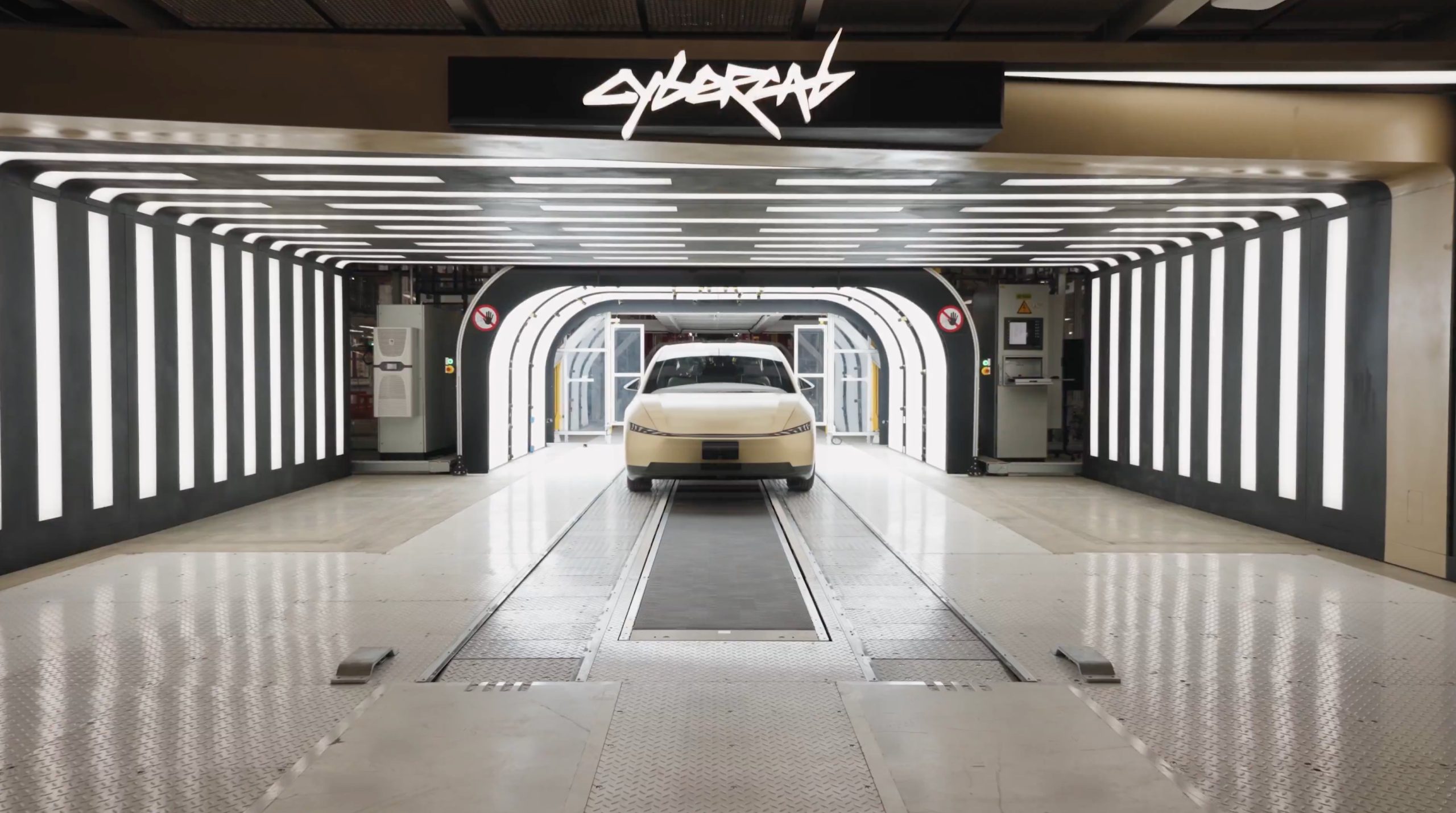
Tesla bear Michael Burry got blunt with his beliefs over the company’s valuation, which he called “ridiculously overvalued” in a newsletter to subscribers this past weekend.
“Tesla’s market capitalization is ridiculously overvalued today and has been for a good long time,” Burry, who was the inspiration for the movie The Big Short, and was portrayed by Christian Bale.
Burry went on to say, “As an aside, the Elon cult was all-in on electric cars until competition showed up, then all-in on autonomous driving until competition showed up, and now is all-in on robots — until competition shows up.”
Tesla bear Michael Burry ditches bet against $TSLA, says ‘media inflated’ the situation
For a long time, Burry has been skeptical of Tesla, its stock, and its CEO, Elon Musk, even placing a $530 million bet against shares several years ago. Eventually, Burry’s short position extended to other supporters of the company, including ARK Invest.
Tesla has long drawn skepticism from investors and more traditional analysts, who believe its valuation is overblown. However, the company is not traded as a traditional stock, something that other Wall Street firms have recognized.
While many believe the company has some serious pull as an automaker, an identity that helped it reach the valuation it has, Tesla has more than transformed into a robotics, AI, and self-driving play, pulling itself into the realm of some of the most recognizable stocks in tech.
Burry’s Scion Asset Management has put its money where its mouth is against Tesla stock on several occasions, but the firm has not yielded positive results, as shares have increased in value since 2020 by over 115 percent. The firm closed in May.
In 2020, it launched its short position, but by October 2021, it had ditched that position.
Tesla has had a tumultuous year on Wall Street, dipping significantly to around the $220 mark at one point. However, it rebounded significantly in September, climbing back up to the $400 region, as it currently trades at around $430.
It closed at $430.14 on Monday.
Investor's Corner
Mizuho keeps Tesla (TSLA) “Outperform” rating but lowers price target
As per the Mizuho analyst, upcoming changes to EV incentives in the U.S. and China could affect Tesla’s unit growth more than previously expected.
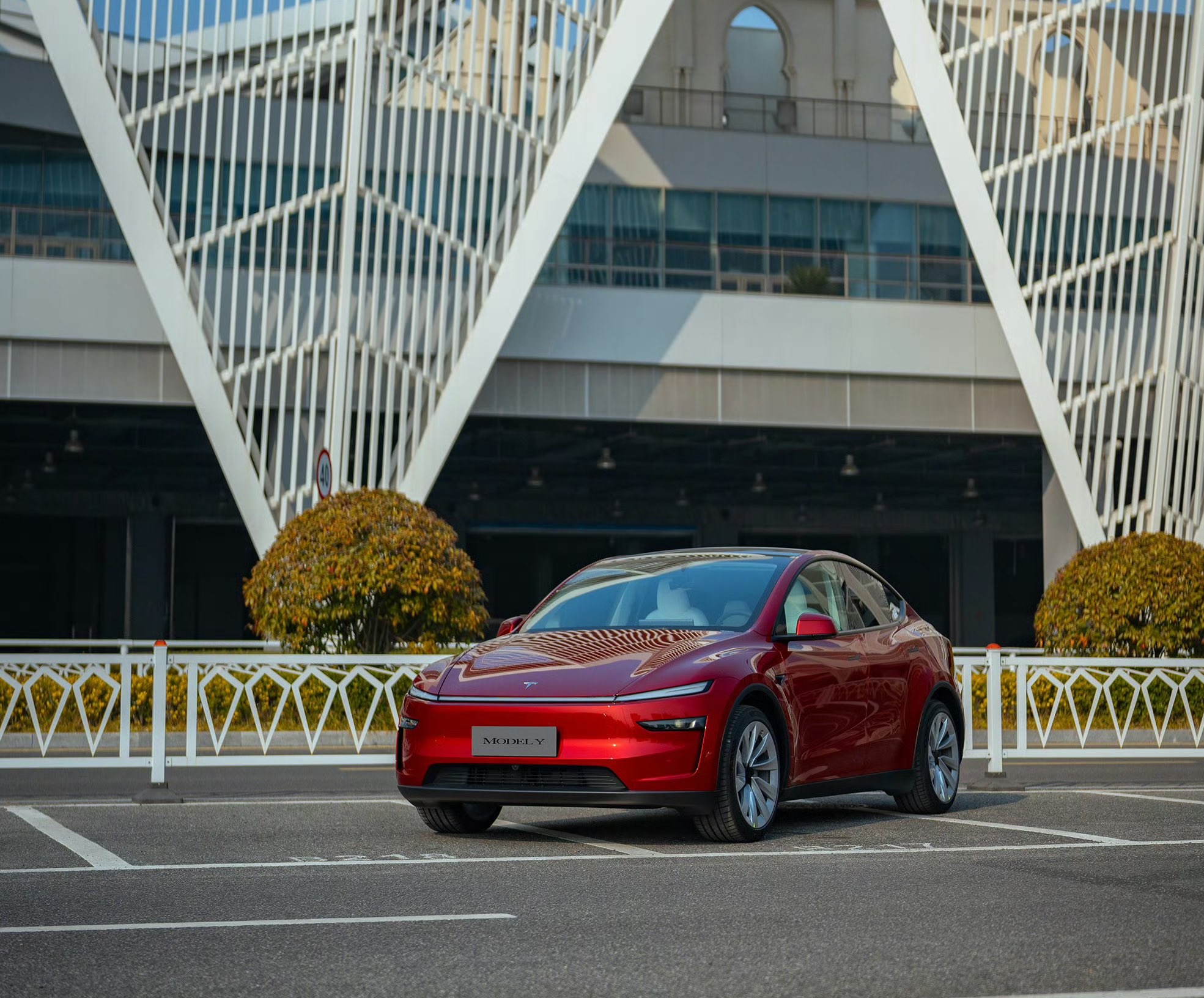
Mizuho analyst Vijay Rakesh lowered Tesla’s (NASDAQ:TSLA) price target to $475 from $485, citing potential 2026 EV subsidy cuts in the U.S. and China that could pressure deliveries. The firm maintained its Outperform rating for the electric vehicle maker, however.
As per the Mizuho analyst, upcoming changes to EV incentives in the U.S. and China could affect Tesla’s unit growth more than previously expected. The U.S. accounted for roughly 37% of Tesla’s third-quarter 2025 sales, while China represented about 34%, making both markets highly sensitive to policy shifts. Potential 50% cuts to Chinese subsidies and reduced U.S. incentives affected the firm’s outlook.
With those pressures factored in, the firm now expects Tesla to deliver 1.75 million vehicles in 2026 and 2 million in 2027, slightly below consensus estimates of 1.82 million and 2.15 million, respectively. The analyst was cautiously optimistic, as near-term pressure from subsidies is there, but the company’s long-term tech roadmap remains very compelling.
Despite the revised target, Mizuho remained optimistic on Tesla’s long-term technology roadmap. The firm highlighted three major growth drivers into 2027: the broader adoption of Full Self-Driving V14, the expansion of Tesla’s Robotaxi service, and the commercialization of Optimus, the company’s humanoid robot.
“We are lowering TSLA Ests/PT to $475 with Potential BEV headwinds in 2026E. We believe into 2026E, US (~37% of TSLA 3Q25 sales) EV subsidy cuts and China (34% of TSLA 3Q25 sales) potential 50% EV subsidy cuts could be a headwind to EV deliveries.
“We are now estimating TSLA deliveries for 2026/27E at 1.75M/2.00M (slightly below cons. 1.82M/2.15M). We see some LT drivers with FSD v14 adoption for autonomous, robotaxi launches, and humanoid robots into 2027 driving strength,” the analyst noted.
Investor's Corner
Tesla stock lands elusive ‘must own’ status from Wall Street firm
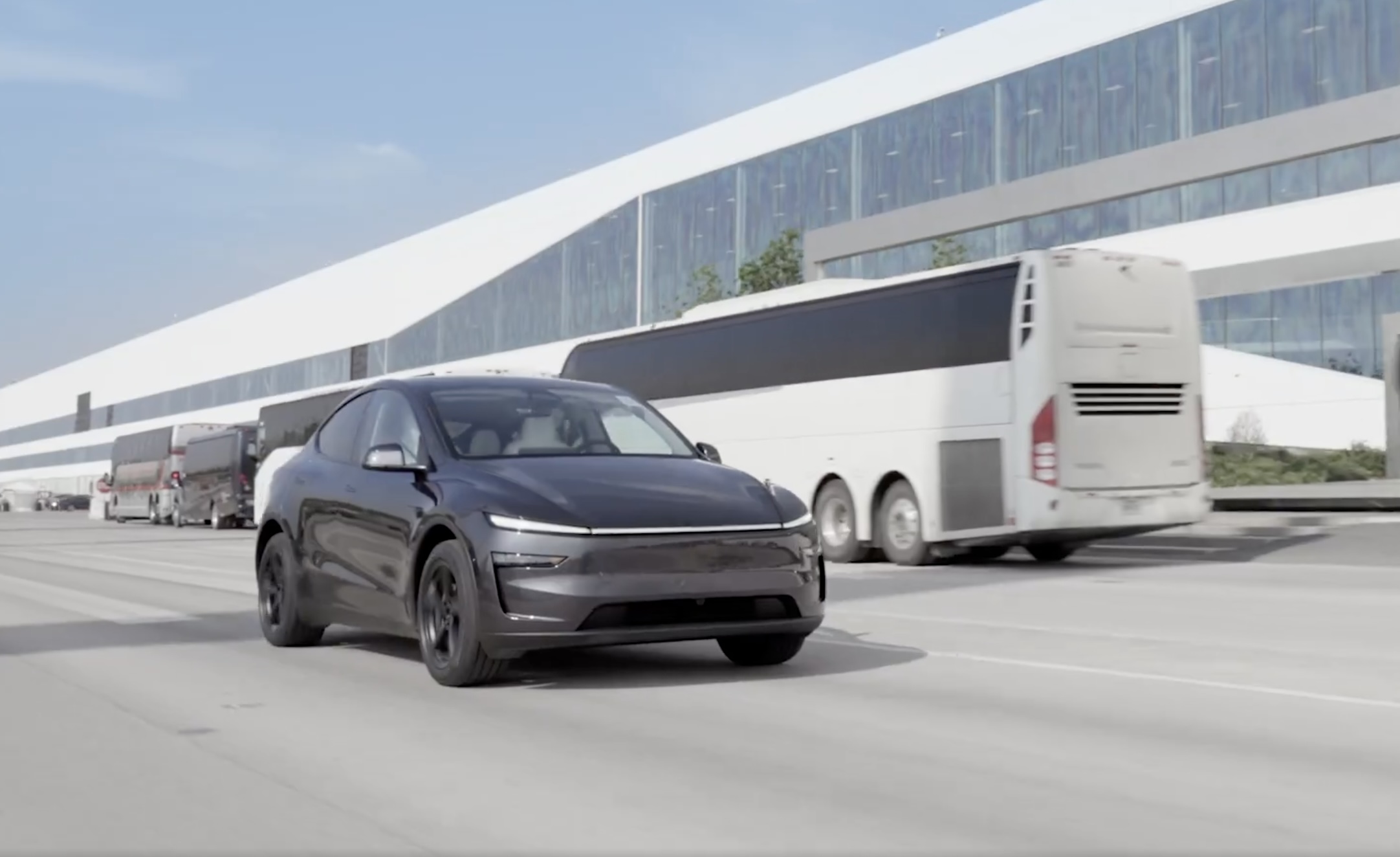
Tesla stock (NASDAQ: TSLA) has landed an elusive “must own” status from Wall Street firm Melius, according to a new note released early this week.
Analyst Rob Wertheimer said Tesla will lead the charge in world-changing tech, given the company’s focus on self-driving, autonomy, and Robotaxi. In a note to investors, Wertheimer said “the world is about to change, dramatically,” because of the advent of self-driving cars.
He looks at the industry and sees many potential players, but the firm says there will only be one true winner:
“Our point is not that Tesla is at risk, it’s that everybody else is.”
The major argument is that autonomy is nearing a tipping point where years of chipping away at the software and data needed to develop a sound, safe, and effective form of autonomous driving technology turn into an avalanche of progress.
Wertheimer believes autonomy is a $7 trillion sector,” and in the coming years, investors will see “hundreds of billions in value shift to Tesla.”
A lot of the major growth has to do with the all-too-common “butts in seats” strategy, as Wertheimer believes that only a fraction of people in the United States have ridden in a self-driving car. In Tesla’s regard, only “tens of thousands” have tried Tesla’s latest Full Self-Driving (Supervised) version, which is v14.
Tesla Full Self-Driving v14.2 – Full Review, the Good and the Bad
When it reaches a widespread rollout and more people are able to experience Tesla Full Self-Driving v14, he believes “it will shock most people.”
Citing things like Tesla’s massive data pool from its vehicles, as well as its shift to end-to-end neural nets in 2021 and 2022, as well as the upcoming AI5 chip, which will be put into a handful of vehicles next year, but will reach a wider rollout in 2027, Melius believes many investors are not aware of the pace of advancement in self-driving.
Tesla’s lead in its self-driving efforts is expanding, Wertheimer says. The company is making strategic choices on everything from hardware to software, manufacturing, and overall vehicle design. He says Tesla has left legacy automakers struggling to keep pace as they still rely on outdated architectures and fragmented supplier systems.
Tesla shares are up over 6 percent at 10:40 a.m. on the East Coast, trading at around $416.








